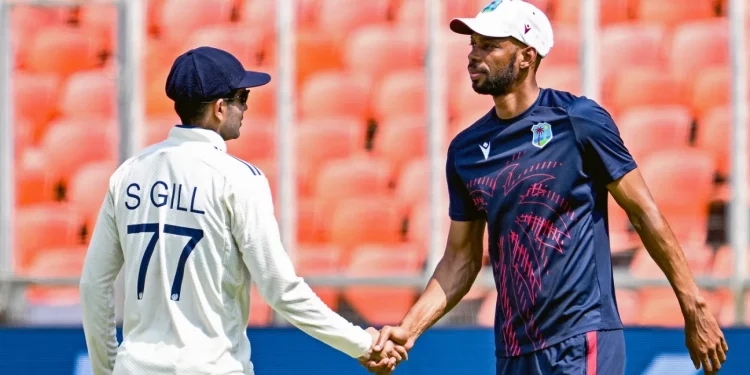From October 10 to 14, the Arun Jaitley Stadium in Delhi will host the second and final Test match between India and the West Indies. The surface is expected to provide the hitters with significantly greater support. In contrast to Ahmedabad’s green wicket, where the West Indies were overrun in less than three days.
The team captained by Roston Chase had a nightmare during the first Test in Ahmedabad. In their first innings, the visitors were bowled out for just 44.1 overs after choosing to bat first on a grass-covered red-soil field. Jasprit Bumrah and Mohammed Siraj, India’s pace combo, took advantage of the circumstances by splitting seven wickets. Before losing by an innings and 140 runs, the Caribbean team’s second batting innings lasted just 45.1 overs. The two-and-a-half-day affair was one of the most lopsided meetings between the two teams in recent memory.
The Delhi pitch, meanwhile, is anticipated to be far more conducive to batting. Patches of grass will be scattered around the black-soil surface, providing an even bounce that should facilitate the batter’s job. The surface won’t offer much seam or swing action, according to earlier assessments, which lessens the threat for batters during the first few sessions.
Delhi’s pitch will be worn down before introducing spinners gradually.
Since there won’t be any live grass as there is in Ahmedabad, Indian pacers will have to pull the same movement off the surface. The fast outfield and somewhat short boundaries at Arun Jaitley Stadium, however, let hitters on both sides to enjoy their time in the middle.
However, it is anticipated that the surface would deteriorate over time, eventually allowing spinners to be used. By Day 4 and 5, spinners like Ravindra Jadeja and Kuldeep Yadav would be anticipating some turn and uneven bounce due to the black-soil base’s tendency to dry up more quickly and the ongoing footmarks that are appearing during the match. Interestingly, the oddball may remain low, putting the hitters to the test.
In the 2023 Border-Gavaskar Trophy match against Australia, the last Test match played here, the tourists lost by six wickets as they struggled against India’s spin attack. Historically, the Delhi surface has provided favourable batting conditions in the first half of the game before deteriorating in the second half. This time, a similar trend is anticipated.







